
Project Gutenberg's The Padre Island Story, by Loraine Daly and Pat Reumert
This eBook is for the use of anyone anywhere in the United States and most
other parts of the world at no cost and with almost no restrictions
whatsoever. You may copy it, give it away or re-use it under the terms of
the Project Gutenberg License included with this eBook or online at
www.gutenberg.org. If you are not located in the United States, you'll have
to check the laws of the country where you are located before using this ebook.
Title: The Padre Island Story
Author: Loraine Daly
Pat Reumert
Release Date: May 8, 2018 [EBook #57118]
Language: English
Character set encoding: UTF-8
*** START OF THIS PROJECT GUTENBERG EBOOK THE PADRE ISLAND STORY ***
Produced by Stephen Hutcheson and the Online Distributed
Proofreading Team at http://www.pgdp.net

by
LORAINE DALY and PAT REUMERT
THE NAYLOR COMPANY
Book Publishers of the Southwest
SAN ANTONIO, TEXAS
4th Printing
Copyright ©, 1962, by Loraine Daly and Pat Reumert
This Book or Parts Thereof Must Not Be Reproduced Without Written Permission Except For Customary Privileges Granted To The Press And Other Reviewing Agencies
All Rights Reserved
Library of Congress Catalog Card No. 62-13061
Printed in the United States of America
The parents of Loraine Daly and the dear friends of Pat Reumert. We fondly remember how, as children, we tested their tolerance, shared their affection, and grew up under the warmth of the old-fashioned story book variety of their family life.
We wish to thank the United States Fish and Wildlife Service, the Texas Game and Fish Commission, and the Rio Grande Valley Chamber of Commerce for furnishing photographs.
In our research we were aptly guided by Vernon Smylie of Corpus Christi, Texas. We wish to thank him not only for help, but for the source material he made available.
As you read the following pages, we hope you can feel a bit of the primitive, swashbuckling history of Padre Island. Where once roamed savages, cavaliers, pirates, soldiers and pioneers, there now rises—out of the sand dunes—an isle which every man has pictured for himself. Tropical birds, sea shell treasures and exotic driftwood are cradled among the gleaming white sand dunes. Once in awhile the shifting sands reveal to the lucky hunter an old money cache or relic of a bygone civilization.
Padre Beach, located at the southern tip of the island, is a resort oasis of modern architecture. A National Seashore Park is being considered to preserve the virgin beauty of the center portion of the island. Multi-million dollar causeways stretch majestically over shimmering Laguna Madre to connect the island at both ends to the Texas mainland.
The world famous tropical Rio Grande Valley is Padre’s luxurious neighbor, preening its giant sized fruit trees and breath-taking jungle-like flowers and palms. The civic and industrial richness of the Valley overflow into Padre to revitalize the growth and development of its beaches.
Around the corner from Padre, bordering the Valley, is the gay flavor of Mexico. Visits to the border towns are gala occasions, with little or no red tape. Dollars meet their usual welcome.
Opposite the northern tip of Padre Island is the booming city of Corpus Christi, one of the country’s most beautiful coastal towns. On the mainland, beside the long stretch of the island, Texas presents its most historical and natural points of interest.
To playfolk who want year-round resort recreation; to hunters and fishermen or to treasure hunters and those interested in legends and wildlife; to retirement seekers and pioneers, and to easy-livers, the following pages will delineate the past, present and future of Padre Island and its hinterland.
Loraine Daly Pat Reumert
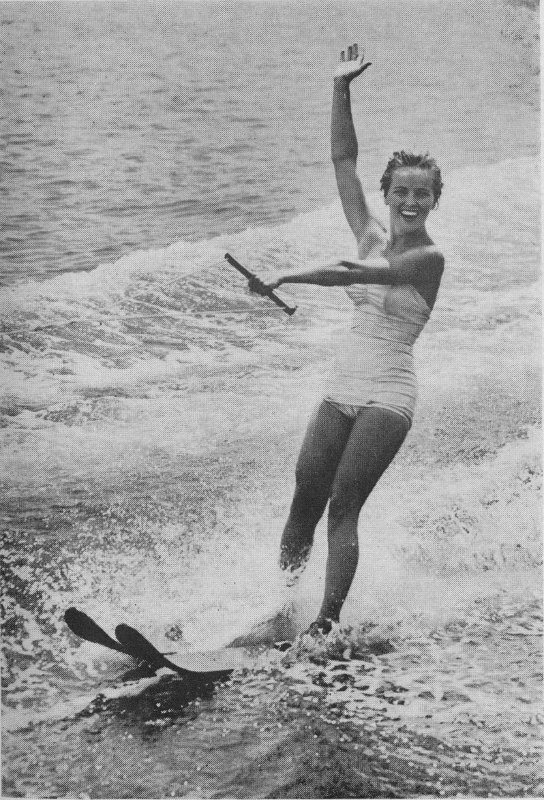
Water skiing off Padre Island

Padre driftwood takes many weird shapes

Driftwood’s beauties are many and varied

Padre’s white sand dunes contrast with Gulf waters
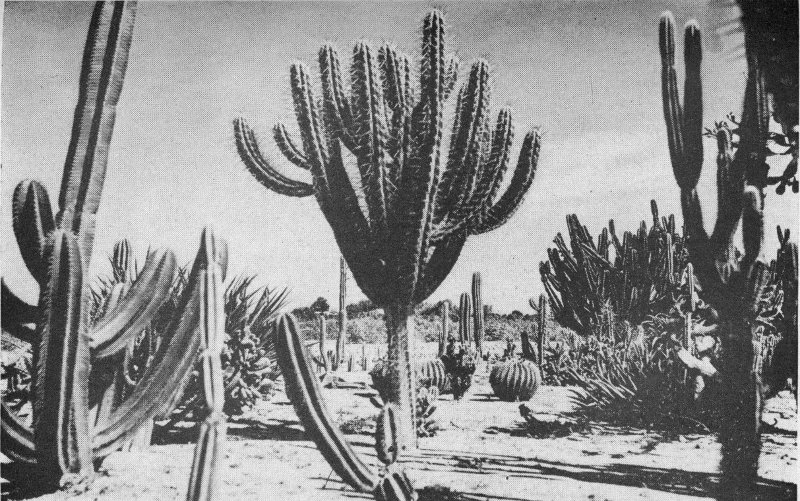
“Cactus garden” in the Lower Rio Grande Valley (Ken Snyder Photo)

Shipwreck! Boilers and wreckage from the Nicaragua
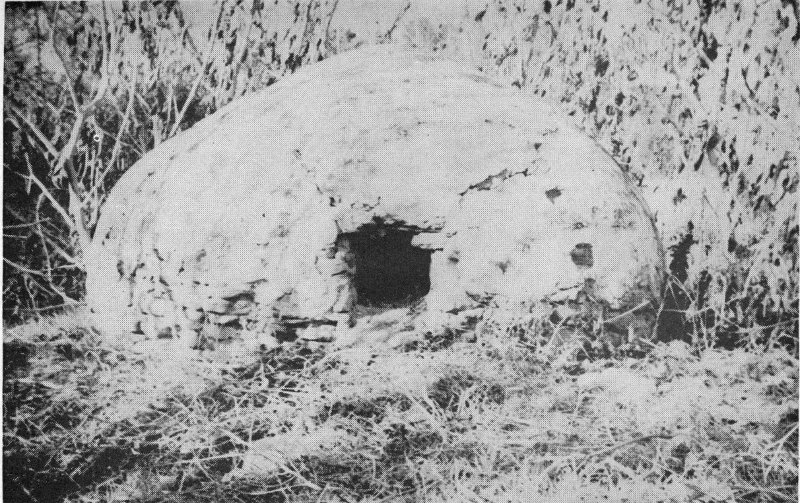
Earthen oven used by missionaries—Mission, Texas

Mier Bell tolled disaster—1842 (Ken Snyder Photo)
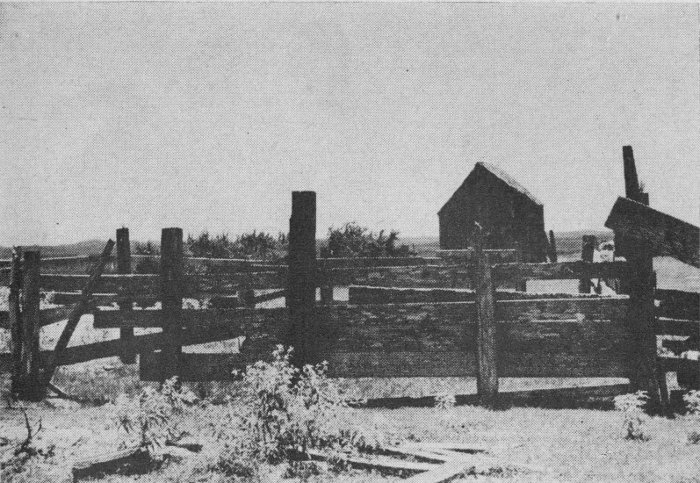
Ruins of the Patrick Dunn Ranch
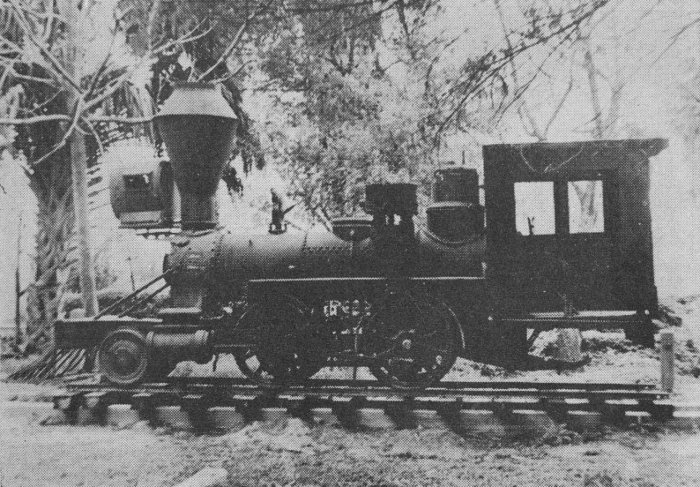
Rio Grande R.R. Locomotive (Ken Snyder Photo)

Port Isabel lighthouse
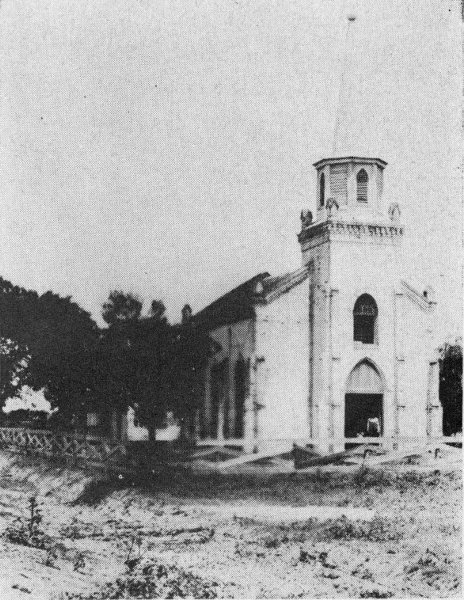
Century-old church—Weslaco
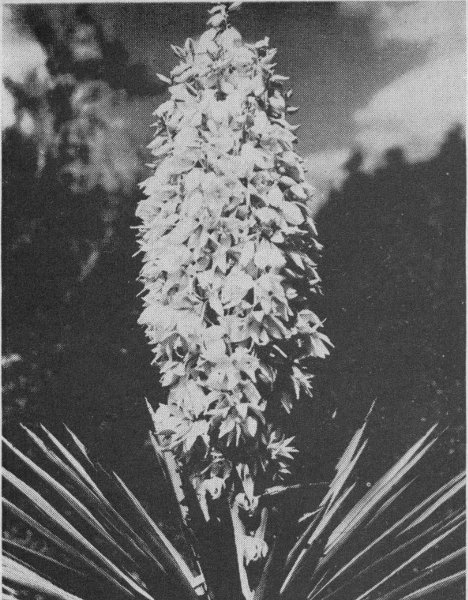
Spanish dagger (Holbrook Photo)
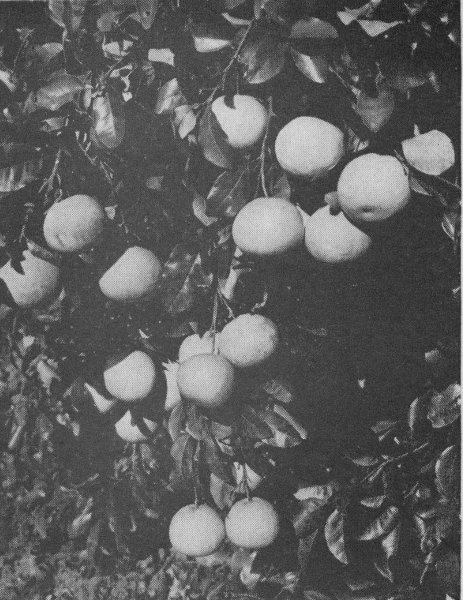
Grapefruit cluster (Ken Snyder Photo)

Palms make roads a majestic panorama
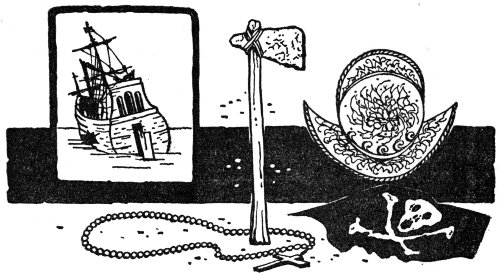
The ghostly etchings of past eras, traced in the mysterious sands of Padre, are a lusty view for the hardiest. Here thrived humanity at its most intense pitch. Adventure, somehow, often seeks islands in which to ferment. Here were wars, savages dueling with royalty, romances of Indian princesses, pirates’ revenge, blood-soaked buried treasures, conquerors’ defeats, resting places of high-spirited explorers, refuges for thieves, scoundrels, and for idealists. Their secrets nap beneath the rhythmic shifting sands.
Padre intruded into history in the 1500’s, when one of the earliest explorers, and certainly one of the earliest winter tourists, Alonso Olvarez de Piñeda, set foot on its coast to open the door to the New World. Next in the parade of travellers was Cabeza de Vaca, who stepped ashore at the southern tip of the island. La Salle and De Soto also briefly touched Padre, and even Cortez (and Drake, in later history) explored the island on the way to conquest.
Fierce Indians were first masters of the island. Relics of their primitive way of life have been retrieved and sent to museums throughout the country. Chief among the Indians were the terrible Karankawas, a cannibal tribe who ravaged the island at the turn of the nineteenth century. Jarring against the soft setting of aquamarine seas, white sands, and pink skies, they shot giant redfish with wildly decorated bows and arrows. They sliced their brown bodies deep into the seas, seeking food and, with glittering knives, often battling sharks. They shouted blood-tingling chants to the accompaniment of shell drums, flutes, and stone-filled gourds. To this pagan music, the painted and feathered “Kronks” danced into the whirl of three day orgies.
The woeful tale of the “Flight of the Three Hundred,” to be dealt with in detail in the following chapter, reveals the plight of satin-clad cavaliers and ladies on Padre, who failed to conquer the challenge 3 of savages and sun. Among them was Doña Juana Ponce de León, whose beauty caused men to search for the Fountain of Youth. Under the relentless sun, these castaways fled from the cannibalistic Kronks into the sand dunes of Padre, buying their lives by leaving their richly brocaded garments behind them to delay and bribe their savage pursuers. One by one they dropped, withered, into the white sands, brought down by fever, hunger, thirst and arrows.
Pirate Jean Lafitte, hero of the War of 1812, and scoundrel of the seas, held court over his renegade colony of outlaws on Padre, and added more legend to the notorious past of Lady Padre. During his reign, he amassed a fortune by preying on Spanish treasure ships. Many a sea adventurer met his death on the shores of Padre because of the treachery and cunning of these devious shipwreckers. These scoundrels would set up lights on the island to confuse the seamen’s course and lure the ships into shallow waters nearby. The vessels would run aground or become wrecked, and the pirates would steal their cargo. Lafitte and his one thousand followers finally settled on Galveston Island. One day he sailed away with a handpicked crew and was never heard of again. It is said that many of the most solid, respectable family trees, just a stone’s throw from Padre Island, sprouted from the buccaneers left behind.
One of the first white men to actually lay claim to the island was a Catholic priest, Padre Nicolás Balli, who obtained sovereign right to it from the Spanish crown about 1800. He came to Padre to convert the Indians to Christianity. Father Balli then established a mission and ranch near the center of the island, calling his settlement “Rancho Santa Cruz.” In 1827, to substantiate Father Balli’s claim, the island was surveyed with braided rawhide cords. Padre Island became his namesake. Earlier the island had been called Isla Blanca (White Island), although the northern end was also called Isla de Corpus Christi, and the southern end San Carlos de las Malaguitas. The good Father, unfortunately, had little luck in converting the Indians. The last of the family to which Padre Balli belonged left the island in 1844.
For three years the island remained deserted, until still another episode in its colorful history unfolded with the wrecking of the three-masted schooner of the illustrious Singer family, of sewing machine fame. Captain of the ship was John Singer, brother of the founder of the Singer Sewing Machine Company. John Singer then built a house, brought cattle from the mainland, and raised a family at Rancho Santa Cruz, the same site used earlier by Father Balli. It is interesting to note that here, on Padre Island, 5 was used the first sewing machine in Texas, for Singer’s wife was sent one as a gift from her husband’s brother. John Singer reigned over the Rancho Santa Cruz village and cattle ranch until the Civil War, when, because of his Unionist sympathies, Singer was forced to leave.
The United States flag appeared over the island when Captain Ben McCulloch of the Texas Rangers galloped down the interminable beach. Often in the course of history Padre’s sands have felt the footsteps of soldiers, for wars have figured generously in her past. Padre’s hard sandy beach road served perfectly for the movement of troops. General Zachary Taylor’s troops marched down the long slender isle and used it as a camping ground during the United States-Mexican War in 1846, as later did the Federal troops during the Civil War. General Sheridan blew apart the Singer Ranch on his way to give impetus to the French withdrawal from Mexico. As the Imperialists left Mexico, Carlotta’s faithful Belgians sought refuge here on the island.
One of the most colorful figures to appear on the scene at Padre was the self-styled “Duke of Padre Island,” Patrick F. Dunn (Don Patricio, as his bronzed cowpokes called him). Beginning in 1879 he raised cattle on his leased, sprawling dunes and the sandy beach until well into the 1900’s. Out of valuable mahogany which floated ashore, he built his 6 famous cowpens, which are still standing, forty miles down the island, and used yet at roundup time. For his ranch headquarters he used salvaged material from shipwrecks. Steamer refrigerator hinges served as his door hinges, and his chairs were from wrecked steamers.
The southern part of the island was finally acquired through the doggedness of devoted Texan John L. Tompkins, who travelled throughout the United States securing titles from stockholders of a defunct corporation. Tompkins learned that title to the turbulent historical island had even changed hands in high-stake poker games.
Like a shimmering mirror, Padre Island has reflected its own flamboyant growth, from savages and cavaliers, buccaneers and privateers, priests and soldiers, to a rapidly growing resort and recreational area.

Lying under the warm sands of Padre Island, and beneath the waters of her coastline, lies the testimony of the island’s turbulent dwellers. Beachcombers still frequently uncover these evidences. Relics of past civilizations have been laid bare by Gulf storms.
Dispatched to Spain by Cortez of Mexico in the summer of 1553, a fleet of twenty treasure ships, laden with gold, silver and gems stolen from Aztec shrines, sailed from Vera Cruz, Mexico, with about two thousand persons aboard. Among them were those mentioned earlier in the ill-fated “Flight of the Three 8 Hundred.” The ships sailed head-on into a hurricane off the Bahamas. Three were sunk, several were able to skirt the storm, but thirteen of the vessels, with approximately three hundred aboard, fled to the west and went aground on Padre Island. Most of the passengers made it safely to the beach, only to be met by the ferocious Karankawas. Without supplies, they fled southward, hoping to safely reach Tampico, Mexico. For awhile they were able to buy their lives and much needed time by bribing the savages with their beautiful garments. Unhappily, however, many met death from arrows, starvation or illness. Only a few survivors reached Port Isabel, and only one person, a priest, reached Tampico. Another survivor, Francisco Vasquez, sustained himself after discovering that fresh water could be found on Padre by digging only a shallow hole in the island sand. Vasquez directed a salvage fleet of Yucatecan Indian divers to the site of the wrecks some months later. All but one ship was found, and it was known to be loaded with Spanish doubloons and bars of gold.
In December, 1904, A. H. Meuly claims to have found the ship and marked the spot. When he returned, his markers were gone. He reported he found a deposit of gold, worth an estimated million dollars, in the skeleton of an old galleon thirty-five miles from Corpus Christi Pass. He believed the hull to be the remains of Cortez’s vessel.
Devil’s elbow, a strange curve in Padre Island’s shore-line which faces the Gulf, is so-named because as early as the sixteenth century it had become the grounding point for many an ill-fated, floundering vessel. These ships often carried large amounts of money, in the form of gold and silver coins. When the wooden kegs carrying the coins rotted, the money was washed ashore. (It is an intriguing point—and undeniable fact—that due to the prevailing water currents sunken objects in the Gulf have a tendency to wash ashore on Padre Island.)
In 1811, a Spanish ship with half a million dollars in its stronghold was sunk by Lafitte. In 1873, the steamer S. L. Lee sank off Brazos Santiago Pass with a hundred thousand dollars aboard. The following year the Little Fleeta carried twenty thousand dollars down with her. In 1875, at least three vessels, the Texas Ranger, Ida Lewis, and Reine des Mers, were lost off Padre with almost half a million known to have been in their holds. The Clara Woodhouse carried eighty thousand dollars to the bottom with her, while the Maria Theresa foundered off Padre Island with a hundred thousand dollars in the Captain’s cabin.
Waiting for some lucky finder, the bulk of this treasure still lies imprisoned in sand dunes and the purple depths of the island’s coast.
The Nicaragua, which went aground on Padre, 10 never to be budged again, forty miles north of Padre Beach on the night of October 16, 1912, is still clearly visible.
It is generally agreed there are still many large caches buried on the island. Some were secretly stashed away by pirates, smugglers and other outlaws who used the island as a rendezvous and safe hiding place. Padre was distinguished as a pirates’ summer hangout. Pirates’ earrings and noserings have been recovered from the sand.
Lafitte is said to have buried a fortune in gold, here on Padre, beneath a millstone with the inscribed command “Dig Deeper!” Several years ago a treasure hunting party, with a chart pinpointing a Spanish dagger plant and three brass spikes, began their search for the Lafitte treasure. Spanish dagger plants they found by the thousands but no brass spikes, and hence the cache is still waiting to be uncovered.
Lafitte dug Port Isabel’s first water well to replenish his ships with sweet water. He, too, had discovered that fresh water could be found under the sand hills around Laguna Madre. The Lafitte wells are now an interesting tourist attraction.
Old English and Spanish gold and silver coins, dating back as far as the 1600’s, have been unearthed, as have stacks of dollars in rusty cans, and jewelry consisting of rings, brooches, earscrews, bracelets and necklaces. Many of these treasures have been purchased 11 by museums.
Respectable people, as well as robbers of the sea, often used Mother Earth as a safe hiding place. The owner of a buried cache often met death at the hands of Indians without having revealed to anyone the location of his valuables.
Money Hill is a sand dune reputed to be filled with a fortune of old coins, silver, gold and jewelry, hidden by John Singer. Some say that the real Money Hill is near Padre Beach, others say at the north end of Padre Island, and still others hold that it is on neighboring Mustang Island. One version has it that Singer and his young son rowed six miles up Laguna Madre from their Rancho Santa Cruz home, now referred to as “Lost City,” to bury the fortune in a dune marked by two small oak trees. Regardless of which story you care to accept, the Money Hill containing the Singer fortune never has been found.
When the Singer family and their ranch hands fled during the Civil War, it was said they buried eighty-five thousand dollars in a screwtop jar along with Mrs. Singer’s emerald necklace, under the foundation of the ranch home. This, too, has never been found, although Lost City itself was discovered in 1931 by Charles Hardin and a treasure hunting party. Here is his story:
12I was walking across Padre Island one morning from the Gulf beach toward the Laguna, when I saw two sword handles in the sand. The blades were crossed, and the rust had welded them together. One of them had the initials “J. H.” inscribed on the handle. We started digging around. Everywhere we looked we found items of interest. They were real tokens of the past.
Several English and Spanish coins and a wealth of silverware were found by Hardin’s group. When the silverware was sent to New York, examined and traced, it was found to be made of coin silver by a firm that had gone out of business in 1800. Just a few inches under the sand was unearthed a blacksmith’s shop, a graveyard, and campaign buttons from Taylor’s Army.
Hardin explains for future treasure hunters, that although he knows the surface has changed, he is certain that the spot can easily be located again. His directions are, “Start at the jetty on the southmost tip of Padre Island, and drive up the Gulf beach exactly twenty-six miles. Then walk a little less than one-eighth of a mile, about two hundred yards, back up into the dunes.”
Lost City was not a city as such, but the site of various settlements that were established over the centuries by different inhabitants. Old Padre Balli, you will recall, established his Santa Cruz Ranch here. Here it was also that General Taylor camped on his way to the Mexican War. John Singer used 13 it as his home site, and cattle rancher Patrick Dunn also used Lost City as his headquarters.
In 1958, Charles Hardin participated in the rediscovery of Lost City with Frank Tolbert, a Dallas newspaperman. Hardin was then sixty-eight years old. They uncovered the foundations of Lost City, which were composed of monster mahogany timbers fastened together with ancient ships’ iron hardware. They found a pirate-style pistol and other parts of eighteenth and nineteenth century firearms, and the head of a tomahawk. Still a mystery, however, is the eighty-five thousand dollar fortune buried in the huge screw-top jar of Singer’s.
Five great ocean currents meet off the coast of Padre Island to toss back onto the white shores many interesting objects from the sea. Some of the mellowed rare woods, eagerly sought by collectors, are giant mahogany, or Spanish cedar logs, cypress, cottonwood, walnut, bamboo, gum and teak. An interesting driftwood museum has been started at Padre Beach. Coconuts, probably from the West Indies, are found at times by the thousands.
Not long ago, a man idly kicked a can along the sandy beach and, after a few moments, tiring of his sport, kicked it aside. The man behind him picked up the can and found it contained three hundred dollars worth of old coins. A woman, noticing an 14 oddly designed box, opened it and discovered it was full of jewels. One hunter received eight hundred dollars for two silver bars and an interesting old one hundred-fifty foot chain, of the type used on ocean going vessels of years long past.
These hard-packed sands have yielded some shells of such importance that they are now in the Smithsonian Institute. Many shells are merrily named: sea pearls, sea hearts, starfish, sea pansies, sea biscuits, sharp eyes, baby’s foot, jingle shells, angel wings, periwinkles and sand dollars (round and flat as a coin). When a sand dollar is dried and opened, you behold five tiny structures which perfectly resemble flying seagulls. The main shell banks, Big Shell and Little Shell, are twelve miles apart. They are oceans of tiny marine shells deposited along the beach. Big Shell differs only in that it is made up of larger shells. Driving is very tricky business in this area.
A steel rod to thrust into the heart of Padre is weapon enough to reward the hunter with his own intimate glimpse of its vibrant past. The rod may only produce the false alarm sound of a buried coconut, or, maybe, it will discover the glittering loot of one who never returned.

Padre Island, the slim white ladyfinger of the Texas coastline, stretches for one hundred-ten miles, from sparkling Corpus Christi to historic Brazos Santiago (Arms of St. James) Pass. Laguna Madre (Mother Bay), a beautiful natural bay, separates the mile wide island from the Texas coast mainland. Cradled in the Gulf breezes, Padre’s picturesque terrain beckons to pleasure seekers to taste its temperate climate.
Mile after mile of rolling sand dunes, which appear to be a miniature mountain range, are covered 16 with unusual tropical vegetation. Down the center is a somewhat level plain, with another range of dunes flanking the western side of the island, which overlooks the placid Laguna Madre. Shining shell banks jewel the endless miles of white, hard sand beaches. In this virgin wilderness small rainbow clusters of wildflowers bend to the tropical Gulf breezes. Sweeping across the azure skies fly the wild birds, occasionally diving into the limpid waters to catch the silver betrayal of a luckless fish.
Padre is bordered on the north by Mustang Island; on the south by Brazos Island. Many small islands dot the adjacent Laguna such as Little Bird Island, Big Bird Island, Dead Man’s Island, and Shamrock Island.
The five great ocean currents, mentioned earlier, meet at what is known as the Devil’s Elbow off the center shore of Padre Island. The prevailing wind is from the southeast eleven months of the year, and from the northwest during the month of December. Normally, the Padre Island area has six light frosts a year. Its year round temperature averages 74.5°; water temperature is 69.2°; daily breeze, nine miles per hour. It lies in the general longitude of Florida.
Padre Island is an ideal winter haven for birds ... and tourists.

Great migrations of birds darken the sky on their way to Padre Island and the surrounding winter refuge area. Here you can watch stately, elegantly attired families; noisy, rollicking, irresponsible marauders; lovely, comical, natives and foreigners. Most of those that inhabit the Laguna Madre area are members of the wading tribe; dainty snowy egrets, graceful black and white stilts, dignified blue herons, reddish egrets, clownish Louisiana herons, fat, bell-mouthed pelicans, laughing gulls. More than a hundred different species may be seen here during the 18 course of a year.
Snowy egrets dine delicately on small fish; stilts, in their tuxedo dress, are endlessly predatory. Great blue herons that stand knee deep, statuesque and immobile for hours, suddenly slash out their javelin-like beaks to come up with a silvery mullet. Louisiana herons dart ridiculously across the shallows. Along the shoreline scamper the kildeers, while a reddish egret seems to dance off his enthusiasm to ballet tunes. Formations of white pelicans chase tiny fish across the shallow water. It is surprising to see the apparently awkward brown pelicans dive like efficient machines. West Indian Negroes claim they have seen these birds seize fish six or eight feet under water. Soaring with what seems like a single wingbeat against the sky, the gulls and terns, airy wanderers all, shed their earthbound clumsiness to marvelously graceful flight.
During May, June and July, the serious business of housekeeping begins. The birds begin to prepare for nesting to put on gaudy plumage or handsome wedding garments. They temporarily abandon the heavens. With noisy disharmony, they act out one of nature’s greatest dramas, the perpetuation of the species. On Padre itself, and on small nearby islands in the Laguna, as well as in certain areas along the coast of the mainland, they nest side by side and squawk and squabble as they raise their young.
One’s first sight of such a nesting place is a vivid experience. On the sand and shell of the beach lie the speckled eggs of shearwaters and terns. In the low-growing brush are nests of ibis, egrets, spoonbills and herons. Pelicans pick the more open portions of the islands to hatch their young in nests that are little more than flattened places in the grass. When flying into these areas in a small plane, as research workers often do, birds retreat in stampedes.
Green Island, nearby and lushly overgrown with forests of ebony and cactus, lures birds that ride the winds for hundreds, or even thousands of miles; flamingos from Bermuda, yellow-billed tropic birds from the Antilles come to visit. Most frequent visitors are great black-winged fliers known as frigate birds. These pirates (who are too lazy to hunt their own food), force, with buffeting wings, the gulls to disgorge fish in their craws, seizing the prey while still airborne.
Among Padre’s most interesting birds is the small contingent of falcons that stops on or near the island instead of continuing with the mass migration to South America. These big handsome duck hawks, with bluish-grey feathers narrowly banded in black, are said to have a cruising speed of fifty miles an hour. In the downward swoop to strike their quarry, known as a “stoop,” they have been clocked by pilots at speeds close to two hundred miles an hour. Many 20 sportsmen feel it is more humane to hunt with trained falcons than guns, since the game is either killed instantly or escapes unharmed. The fact that it was not generally known falcons winter on Padre Island until recently made them comparatively safe, but their numbers are rapidly diminishing now that they are being molested.
Hundreds of thousands of redheads and canvasbacks, both diving ducks, spend the cooler months around the Atascosa Wildlife Refuge. They arrive about the middle of August. Blue-winged teal, or pintails, arrive in October. By November first there will be a quarter of a million ducks; sometimes two million birds in all are on the refuge at one time. Flights of ten thousand ducks in one flock are not uncommon. Visitors say several small islands, which are favorite breeding places, can hardly be walked upon for fear of crushing nests, eggs, and young birds.
Echelons of geese and whole hosts of many waterfowl varieties end their winter migration here. Wood ducks, the most beautiful and gentle of all, nest in the trees. Rare and almost extinct whooping cranes, huge and stately, come from Canada to spend winter months in nearby marshy areas. At the last count there were only about thirty-six of them left.
“Mr. Paisano” is the most colorful and interesting bird to inhabit the tip of Texas. He is the plucky little roadrunner, who looks as though he were assembled 21 from spare parts. Imagine, if possible, a long striped snake on two legs, a feather duster on his head and another trailing behind. He is about two feet tall, with a tail as long as its body, a ridiculous crest, stubby wings, rarely used and blue, mocking eyes, circled with yellow rings and shaded with eyelashes a movie star might envy. He is famous for his cocky self-assured air.
Lore has it that the roadrunners surround a rattlesnake with a fence of cactus while the reptile sleeps. When the fence is completed, the snake is aroused. He frantically slashes at the fence, becoming so entangled and bedeviled by spines that he falls an easy victim. Some Mexicans, who named the bird Mr. Paisano, believe it to be good luck if he crosses the path from left to right, and bad luck if he crosses in the opposite direction.
For ages Laguna Madre has sheltered myriad varieties of fish and shellfish, providing bounteous banquets for wildlife frequenting her shores.
Among the animals native to Padre are ’possum, jackrabbits, ground squirrels and pocket gophers. The days of the Padre coyote are limited due to encroaching civilization. People along the border swear the coyotes are fish eaters, also, and use their tails for fishing.
Once the colorful little Padre coyotes claimed top billing in a widely publicized coyote hunt. Accompanied 22 by newspapermen and cameramen, under the direction of Dr. J. A. Jockaday of Port Isabel, five hundred men planned the hunt with the precision of military strategy. It piqued public interest like a Hollywood premiere. The coyotes were to be driven into an amphitheater to meet their destiny. The coyotes, however, outwitted their predators and only twenty-six were killed.
All along the beach, pale colored and square shelled, are the ghost crabs, skuttling across the sands, returning to their holes when danger threatens.
With a little time to leisurely explore, one can roam the island and peek into intimate secrets of Padre’s wildlife.

Padre Island itself is easily accessible by car, train, plane, boat or bus. Flying in, one can land at Brownsville International Airport (at the south), Corpus Christi Airport (at the north), Padre Beach Airport at Port Isabel, near the southern point of the Island.
Three causeways are now in use and another is being planned. At Corpus Christi, one may reach the island over the scenic Nueces County Causeway. From Port Isabel to the island, one mounts the three million dollar, two and one-half mile long Queen 24 Isabella Causeway. Oldest of the three causeways is a wooden one which hops along the chain of islands from the mainland city of Aransas Pass, the Mustang Island community of Port Aransas, famous fishing haven. The fourth causeway is being planned to cross the Laguna Madre from Port Mansfield.
In the not too distant future, a scenic paved, multi-million dollar highway, reaching the full length of Padre Island, is in prospect. Travel from the northern end to the southern end of Padre is recommended on the mainland United States Highway 77 southward toward Brownsville, and then along Texas Highway 100 to Port Isabel and over the Queen Isabella Causeway to the island.
The Padre Island beach facing the Gulf provides a beautiful scenic drive during normal tides at both the north and south ends. It is impossible, however, to drive the full length of the island because of a channel near the center that divides the island into two parts.
“Where the wind blows, the oil flows, the cotton grows, and it never snows,” is the colorful slogan of CORPUS CHRISTI, famous for its booming industry, beautiful Ocean Circle Drive, airfields, and mansion-studded beaches. A United States Naval Air Station, one of the largest in the world, is here, as are Del Mar College and the University of Corpus Christi.
As a cultural center, Corpus Christi frequently assumes a Parisian air when writers and artists convene in this sunny city. The CORPUS CHRISTI JUNIOR MUSEUM is fun for children. Here for the children is a colorful collection of Indian relics and Padre Island shells. There are also many other fine museums.
Only an hour’s drive from Corpus Christi is the ARANSAS NATIONAL WILDLIFE REFUGE at Austwell, which offers sights of the nation’s wildlife in its own habitat; birds and game abound. Even the whooping crane sleeps here during the months from November to April.
ROCKPORT and FULTON BEACH, in the Corpus Christi area, are famous resort cities, aristocratically adorned with lovely wind-bent oak trees. In nearby GOOSE ISLAND STATE PARK is a MARINE LABORATORY and AQUARIUM.
The Annual Tarpon Rodeo has made nearby PORT ARANSAS famous, and visitors have been introduced to its fine restaurants, noted for their seafood.
Leaving Corpus Christi, Highway 77 cuts through Kingsville, headquarters of the fabulous KING RANCH of nearly a million acres, where roam eighty-five thousand head of cattle. The acquisition of this huge acreage was begun in 1853 by Richard King, one of the early steamboat captains who navigated 26 the Rio Grande. Here was developed the only breed of cattle originated in the Western Hemisphere—the King Ranch Santa Gertrudis breed. Inside the fifteen hundred miles of fencing are some three hundred windmills. The ranch is famous, also, for breeding thoroughbred horses, two of which, Assault and Middleground, have been Kentucky Derby winners. The Texas College of Arts and Industries, one of Texas’ finest, is in Kingsville, too.
Settlement of the lush Rio Grande Valley was first undertaken in the late eighteenth century, when the Count of Sierra Gorda, Escondon, brought settlers into this then semi-desert region of the Rio Grande delta. These were the first Europeans to attempt permanent settlement in the region. In 1767 Spain confirmed their endeavors.
From then until well into the nineteenth century, the Valley was left pretty much alone. It was the spreading empires of the cattle barons that brought the next burst of activity. In 1872 the Rio Grande Railroad, a rambling, narrow-gauge line, was completed from Port Isabel to Brownsville, and promptly put most of the river steamboats out of business, although steamers were used to take goods to Mier as late as 1886.
The coming of the main railroad from the North—the International and Great Northern—really opened the Valley up to its present prosperity. This 27 was in 1904, and ever since the Valley has been prospering. Port Isabel became a deep water port in 1930; Brownsville followed. Harlingen was made a port with the lengthening of the Intracoastal Canal in 1951.
Poised at the entrance to the Lower Rio Grande Valley is RAYMONDVILLE, and the nearby LA SAL VIEJA, a great salt lake, which for the most of two centuries provided salt for South Texas and northern Mexico. From Raymondville it is only a twenty minute drive to the Gulf of Mexico at PORT MANSFIELD.
Next are HARLINGEN and SAN BENITO, two palm-studded cities, situated side by side, frilled with tropical plants and fruits. Plush motels, lavish restaurants, reminiscent of Las Vegas with dazzling neon finery, dramatize the wide, sparkling, clean streets. The warm winter season is entertaining with its fiestas and cultural festivities. In San Benito a beautiful wide resaca (Spanish for old river bed) is one of the largest and most picturesque left by the Rio Grande in its meandering around. Besides being the home of the Valley cotton industry, tremendous canning plants are located in this area. Every February the Municipal Golf Course is the scene of the nationally famous “Life Begins at Forty” invitational tournament.
Once this beautiful valley setting was a tangle of 28 thorny mesquite and cactus, but irrigation has turned it into a productive tropical resortland. The slogan of the Valley is “land of fruit, flowers and funshine.” Amid nature’s lavish display of grapefruit, oranges, lemons, limes, tangerines and tangelos, solemnly sit weathered old missions. Art here often takes the form of the weird figurine shapes of cactus huddling near the ground or jutting against the sky.
About two-thirds of the people in the Lower Rio Grande Valley are of Latin-American descent. As a result, the Valley is bilingual. Even stop signs read “stop” and “alto.” Noted for their friendliness, the populace of the Valley (at this writing) is numbered around a half million.
At the scene of the first shots fired in the Mexican War sits BROWNSVILLE, largest city in the Valley, named after Fort Brown, a military establishment that was earlier named Fort Taylor. Here are battle sites marking places where General Zachary Taylor defeated the Mexicans during his victorious march through the Valley. Just outside the city is Palmetto, a site that has the distinction of being the actual last battleground of the Civil War, when three hundred Confederates stationed at Fort Brown defeated seventeen hundred Federalists who tried to capture the cotton stored in Brownsville warehouses. This was six weeks after the surrender of Lee at Appomattox; due to poor communications of the time 29 news of the surrender had not reached Texas. Now Fort Brown serves as Texas Southmost College. The old buildings and breastworks of the fort still remain.
A gentler history of Brownsville can be experienced in the STILLMAN HOUSE, built by the city’s founder over a hundred years ago and now carefully restored. In the patio of the Brownsville Chamber of Commerce sits a little locomotive, relic of the RIO GRANDE RAILROAD, first in South Texas. The CHURCH OF THE IMMACULATE CONCEPTION has survived here since 1850. Nearby, also, is the convent INCARNATE WORD, where the first nuns came in 1860. A state marker identifies the site. Brownsville’s high-brows leisurely nested in the OLD VIVIER OPERA HOUSE, scene of culture and recreation until 1916.
In Brownsville, the old-world charm of the Spaniards, the exotic traditions of the Indians, the youth and industry of the Americans are blended and mingled into a unique and colorful culture. Under Spanish architecture one hears soft Castilian spoken. The strong influence of ancient Mexican-Indian cultures survives in the rich-hued dresses of the local women, colorful comic wear, quaint customs, and many spicy border dishes. Exquisite inns with modern facades nestle in lush vegetation. The PORT OF BROWNSVILLE, western terminus of the Intracoastal Canal, serves as an outlet to world markets 30 for the South Texas and northern Mexico area.
A short distance from Brownsville is SANTA MARIA, recalling the days of its importance when river boats were the principal means of transportation along the Rio Grande. Now it is interesting because of the lovely little church built in 1880 by the Oblate Fathers.
Close to LOS FRESNOS, a farming community, is BAYVIEW, where live industrialists, writers, artists, and retired executives. Luxurious estates dot a twenty-two mile stretch of a beautiful resaca. The Los Fresnos Charity Horse Show, with its international flavor, is held in mid-June.
Over the golden Queen Isabella Causeway, across from Padre Beach on Padre Island, reigns PORT ISABEL, explored by Spaniards in the early sixteenth century. Before 1800 it was settled as a fishing resort community. Its old lighthouse, built in 1852, has been preserved as a state park in the center of the city—probably the smallest state park in Texas. This historic structure was built to guide ships coming in from the Gulf of Mexico through Brazos Santiago Pass. Port Isabel still serves as a port for ships from the seven seas. Ocean going vessels constantly ply through Brazos Santiago Pass. Succulent shrimp is the commercial life of Port Isabel, which is often referred to as the “Shrimp Capital Of The World.” Around the clock the shrimpers unload their valuable 31 cargo. The city is also home of the Texas International Fishing Tournament held in August. At one time Port Isabel was designed to become a modern Venice, with channels dredged through it which may still be seen.
Turning left from Brownsville, one winds through the Lower Rio Grande Valley, where groves of Texas’ famed delicacy, pink grapefruit, and hugely clustered oranges and lemons provide tempting and fragrant scenes along the highway. Also, in this tropical valley, and with little coaxing, papayas, bananas, avocados, cantaloupes, mangos, and strawberries flourish. In many of the citrus groves signs invite tourists to pick fruit at bargain prices, such as a dollar per bushel, while the rest of the nation is still trying to ward off the assaults of winter.
Here is a seventy-mile stretch of palm-lined Highway 83, framed in tropical splendor, which runs from Brownsville at the east end of the Valley to its west end, through an almost unbroken chain of cities, including La Feria, Mercedes, Weslaco, Donna, Alamo, San Juan, Pharr, McAllen, and Mission. The first stop down this main street is LA FERIA, a pleasant residential community. Then on to MERCEDES, home of the Rio Grande Valley Livestock Show and World Championship Rodeo. It, also, is a friendly city endowed with an abundance of flowers, where Sunrise Hill Memorial Bowl holds, for the whole 32 Valley, sunrise Easter services in its amphitheatre. Next to Mercedes is WESLACO, central point of the Lower Rio Grande Valley and a city of modern urban charm. DONNA is the home of the South Texas Sheep and Land Exposition held during the winter months. A townsite which has been moved away from the Rio Grande after the disastrous flood of 1909, it is a city of many new civic buildings. Like a pendant in the string of Valley pearls, presides ALAMO (meaning cottonwood tree in Spanish), a city of bougainvillaea, poinsettias, and lush tropical greenery.
Just across the street is SAN JUAN, site of the beautiful NUESTRA SENORA DE SAN JUAN church, completed in 1954. Its exquisite altar was a gift from Spain.
“’Tain’t far to Pharr from anywhar,” is the inadequate slogan for PHARR, home of the Valley Vegetable Show, held each December. Many fruit and vegetable processing plants are here. Eleven miles southeast is the SANTA ANA NATIONAL WILDLIFE REFUGE, with two inland lakes maintained for waterfowl and wildlife. Some of the two hundred eighty-eight species which have been sighted in it are considered quite rare. It is a veritable tropical jungle, with ebony trees said to be the largest in the United States.
Next comes McALLEN, “City of Palms,” favorite 33 of the tourists, and the oil and gas center of the Valley. The city is built on one of the richest natural gas deposits in Texas. Only eight miles from the border, McAllen is often called one of the gateways to Old Mexico.
MISSION, named after LOMITA MISSION, is the setting for the Texas Citrus Fiesta, a celebration glorifying the citrus industry of the state. Lomita Mission is a small chapel built in 1849. Three miles west of Mission is BENTSEN STATE PARK, which gives one an idea of how the Valley looked a half century ago—before dense brush growth gave way to irrigated farms. For many years William Jennings Bryan, the silver-tongued orator, was a nearby resident. The BRYAN HOME is two miles north of Mission.
Westward, from Mission to Rio Grande City, is a Hollywood western setting, with shrines dotting the hilltops. At the entrance to the town is Fort Ringold, famed military establishment which served as a station for Robert E. Lee, Ulysses S. Grant, Zachary Taylor, Stonewall Jackson, Jefferson Davis and John Pershing. Built as a cavalry post in 1847, today Fort Ringold is the campus of the Rio Grande City High School. Near Rio Grande City stands OUR LADY OF LOURDES, a replica of the world famous shrine as it exists in the Pyrenees Mountains of southern France.
ROMA, founded in 1768 as a townsite, bears such a striking resemblance to towns in the interior of Mexico that it was used as a location for the filming of the movie Viva Zapata. It is a sleepy little village perched on a bluff overlooking the Rio Grande, some one hundred miles upstream from the Padre Beach area of Padre Island. The towering church and other local buildings are constructed of adobe brick and stone. Its surrounding hills abound in geological and botanical rarities: garnets, turquoise, agates. Petrified wood and fossils may be gathered along with many unique varieties of cactus—including the ceremonial “peyote.”
Roma opens the door to FALCON DAM, built jointly by the United States and Mexico to impound the excess waters of the Rio Grande. The dam can be crossed into Mexico without cost or formality.
NUEVO GUERRERO (meaning New Guerrero in Spanish), the Mexican community across the dam, has an interesting story of its own. Old Guerrero, which it replaced, founded a century and a half ago, was one of the original five Escandon colonies inundated by the Falcon Dam reservoir. The Mexican government then built a new town for its residents, complete with homes, shops, schools, etc. The city resembles a house of mirrors; each home looks like every other home. Stores and public buildings are the same.
OLD ZAPATA had the same history, but the United States government provided the funds, letting the residents rebuild to each one’s fancy. Thus, the growth of the two communities has been along quite different lines.
A little north of the Valley main street is EDINBURG, with a school district of nine hundred and forty-five square miles! This is the county seat of Hidalgo County and the home of Pan-American College. Each September the Whitewing Dove Fiesta is held.
Many millions of trees shade the Valley. Belle of them all is the Royal Poinciana, a gorgeous, flowering tree with deep red blossoms. More than fifteen varieties of palm trees thrive here, ranging from the three or four foot ornamental palmetto to the stately date and the majestic one hundred foot tall Royal Palms. To plant a palm is to insure a share in eternity, since palms are said to live forever.
Dozens of varieties of fruit and vegetables abound in the silt enriched sandy loam of the Valley. When the citrus orchards are in bloom, the entire region is scented with a delicate perfume-like aroma. Tropical hues are picked up in the native growth and transferred to everyday dress, making all a harmonious whole.
The Valley, actually the delta of the Rio Grande, is young. Falcon Dam, calculated to wipe out the 36 threat of drought and to insure an ample water supply downstream, is attracting new industry. The Valley welcomes the stranger with delight. Most families were strangers, too, twenty or thirty years ago.

It’s like having your cake and eating it, too! Residents and tourists on Padre Island and in the Valley can enjoy the indulgences of modern life in growing cities. Yet, if they want to take a step into the past to arrest the tempo of contemporary living, they can cross the border into Mexico’s picturesque towns and villages. These border towns are the gateways to the great Mexican cities of Monterrey, Saltillo, Guadalajara, Mexico City and other interior points. Visits to the border cities are uncomplicated by red tape. Short stops are necessary at customs 38 offices at both sides of the river.
Across the Rio Grande from Brownsville is one of the largest border towns, MATAMOROS, a wealthy metropolis of one hundred thousand people. Here, there is a beautiful modern residential section. THE FRENCH OPERA HOUSE was built a century ago at the whim of Empress Carlotta, during the French occupation of Mexico. The unusual floor was constructed to be tilted so all could see the stage, or levelled when the building served as a ballroom. As one moves off the International Bridge at Matamoros, the elaborate mansions of the Mexican cotton and oil barons dominate the landscape with their architectural blends of ultra modern and traditional Spanish design. Hundreds of curio shops invite the tourists to buy anything from a live goat to a five hundred dollar pair of boots. As in many Mexican cities, the life of the community throbs around the market place, which is afire with color. There is always activity, with strolling musicians and romantic couples. Higher than any of the other buildings, the ancient cathedrals tower mystically over the town’s gaiety. In Matamoros are diversions distinctly different from any of those in the United States; exciting cockfights, famous matadors performing in the Plaza de Toros; there are concerts, attractive night clubs with excellent entertainment, restaurants serving wildgame dinners. A menu, in some of the border 39 night clubs, for a tab of about two dollars per person, includes venison, cabrito (young goat), quail, wild duck, white-wing dove, guacamole salad, beans, fried rice and hot peppers. Then there are traditional promenades of young people in the plaza too. An afternoon at a bullfight is an unforgettable mixture of tradition and fearful thrills as matadors of Mexico and Spain compare thrusts.
PROGRESSO AND NUEVO PROGRESSO are immediately south of the Valley cities of Mercedes and Weslaco. Here cafes and curio shops beckon the tourists. A few miles to the south the city of RIO BRAVO, with its dirt streets and primitive peoples, offers a glimpse into a way of life that is rapidly vanishing.
REYNOSA is situated across the river at a point opposite McAllen, and is noted for its gay night life. From here the visitor may visit romantic Monterrey, Mexico, just three hours away over a modern paved highway. In Reynosa’s central market places are examples of native crafts from all parts of Mexico; famous ceramics of Guadalajara and Puebla, painted gourd bowls and fantastic masks from Michoacan, beautiful hand-woven serapes and stoles and beautifully wrought guitars and other musical instruments from the little villages in the highly isolated wooded areas. On Sundays and special holidays bullfights are also staged.
This prosperous, bustling Mexican city was founded in 1749. Its famous Anzalduas Canal, large as a river, runs through the city parallel to the Rio Grande. Although its old cathedrals and plazas remain unchanged, Reynosa has been one of Mexico’s fastest growing cities since the discovery of oil in the area.
The historic towns of CAMARGO and MIER slumber on the south bank of the Rio Grande across from Rio Grande City and Roma. Mier was founded in 1763 and was the site of the famous “black bean episode of the Mier Expedition.” An American party of one hundred and seventy invaded Mexico and were captured by two thousand Mexicans on Christmas Eve, 1842. A drawing was held among the prisoners. Those drawing white beans were spared by order of the Mexican commander. The one in ten who drew a black bean faced the firing squad. The battle-scarred Mier church has an altar and ceiling of carved wood imported many years ago from Spain.
In five locations modern bridges take the tourist into the old world enchantment of another civilization.

The holiday spirit, like the tropical warmth, never really seems to leave Padre Island and the Rio Grande Valley. All year long there is something going on that creates crowds, costumes, parades and a spirit of excitement and fun. “Come, be gay with us,” the slogan of Brownsville’s Charro Days sums up the fun calendar.
A colorful pageant called BUCCANEER DAYS is held annually in the spring in Corpus Christi. Visitors and natives are requested to dress in pirate costumes. Spectacular events include a parade of 42 floats, water pageant, bathing beauty review, fashion shows, street dances, a square dance festival, and a huge show at Buccaneer Stadium with a treasure chest of prizes.
In Brownsville, CHARRO DAYS, the four day pre-Lenten festival in the Mexican tradition, features parades, street dances and colorful displays of merchandise. This whirl of color in motion combines the cultural elements of both Mexico and Texas. Here the population of Brownsville and Matamoros, meet attired in costumes of Latin America. Thousands of charmingly attired children steal the show in the children’s parade.
MEXICAN INDEPENDENCE DAY, the across-the-border celebration on September sixteenth, includes serenades in the plaza, street dances, parties and elaborate fireworks, parades, imaginative decorations, games, colored lanterns, and great glowing crepe paper globes filled with smoke that are released to float over the city. At the Charro rodeo the cowboys demonstrate their fine horsemanship and courage in the competitions. Bullfights are staged on special holidays. Tourists from all parts of the nation come to watch the beautiful girls and handsome boys participate in the courtship promenade known as the serenata, the young ladies walking clockwise and the young men counterclockwise.
January brings the CITRUS FIESTA to Mission, 43 Texas, which offers a highly unusual fashion show, golf tournament, coronation parade and a Queen’s ball. The models wear costumes fashioned from products of the Valley, such as bougainvillaea blossoms and orange peels. The effect is surprisingly beautiful.
The TURISTA FIESTA in Harlingen features high school bands parading from both sides of the border, fashion shows, miniature golf and shuffleboard tournaments, fishing competition, beauty contests, crowning of a queen and king, and barbecue for everybody. Also in Harlingen is the nationally famous “LIFE BEGINS AT FORTY” invitational golf tournament, held on the Municipal Golf Course every February. It offers a full week of entertainment, with trips to Padre Island and Mexico. Of course, players are limited to those over forty. In June, Harlingen holds the COTTON FESTIVAL when the nation’s first bale is harvested usually in the Mission area.
At Mercedes, the RIO GRANDE VALLEY LIVESTOCK SHOW AND WORLD CHAMPIONSHIP RODEO every March offers stars from the entertainment world, big names from the rodeo circuit, marching bands, and an opportunity to view prize cattle and livestock of all kinds. The Future Farmers of America play a big role in this show.
At Port Isabel, the BLESSING OF THE SHRIMP FLEET ceremony is held each summer during the 44 SHRIMP FIESTA, when the participants in the multi-million dollar industry pause to pay tribute to the men who earn their livelihood from the sea. After the serious theme of the blessing of the fleet, a water parade of shrimp trawlers in holiday attire initiates the gaiety of the fiesta. This blessing dates back to earliest Christian times, and has long been an important rite to the shrimpers. At this time the TEXAS INTERNATIONAL FISHING TOURNAMENT offers three full days of competitive fishing.
The WESLACO BIRTHDAY PARTY, held in early September, marks the anniversary of the city’s founding. A feature is Tourist Day, with special attractions planned to appeal to winter tourists.
In Pharr, the VALLEY VEGETABLE SHOW in December draws travelers from all over the country to see the unbelievably oversized, early ripening displays of colorful vegetables.
Many smaller festivals keep things lively during the year. At Edinburg BRONCO DAYS are held in November and PAN AMERICAN DAYS in the spring. An ONION FESTIVAL is held in Raymondville. At McAllen a FOURTH OF JULY celebration always closes with a gala bullfight in Reynosa, Mexico. At Los Fresnos an annual fiesta includes a full scale SOCIETY HORSE SHOW held in midsummer, which draws entries and visitors from all over the United States.

Citrus Queen wears dress of citrus products

Cotton-picking! Corpus Christi area
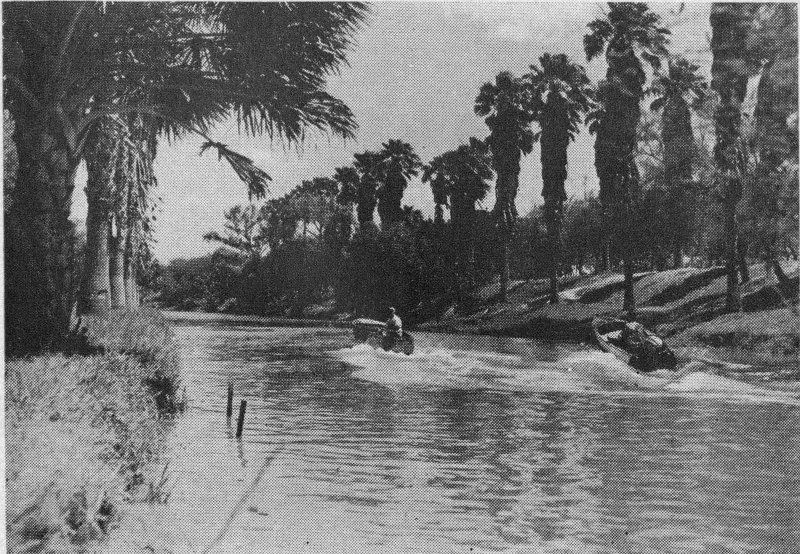
Boating in a resaca
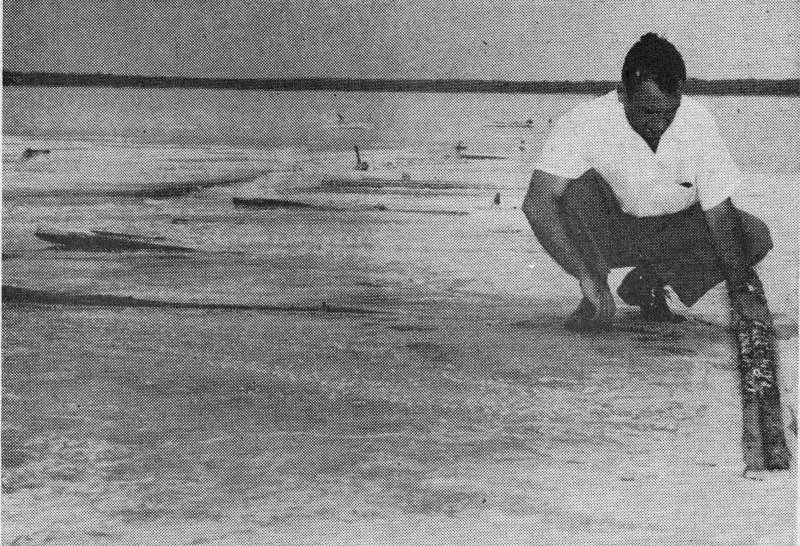
The Old Salt Lake—La Sal Vieja (Struby Photo)
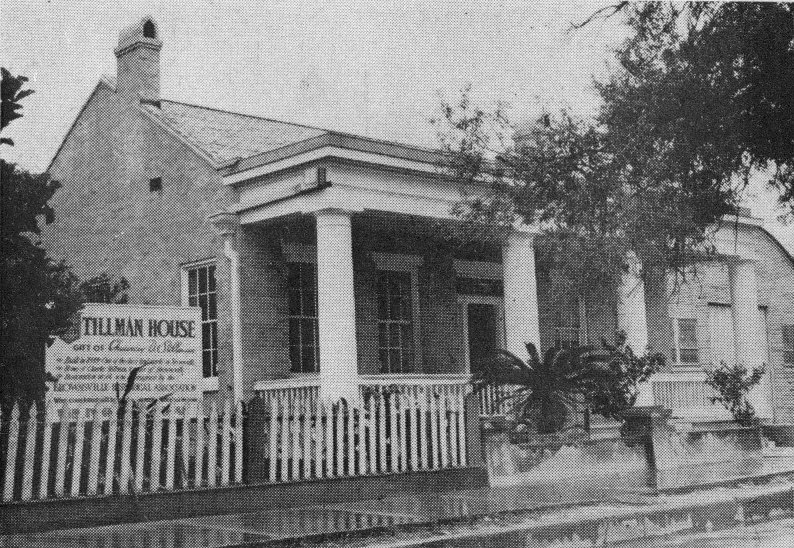
The Stillman House, Brownsville

Wild turkey, Rio Grande Valley
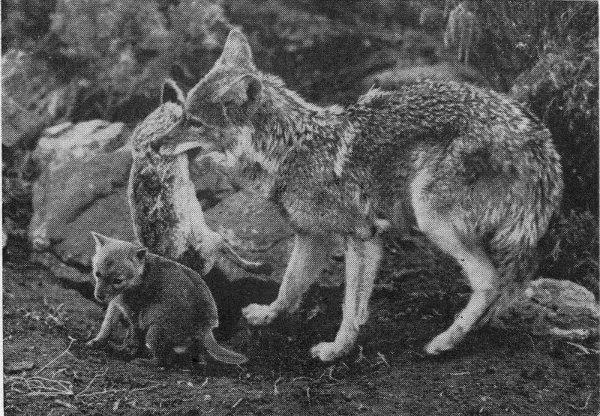
Mother coyote feeds her young (Kalmbach Photo)
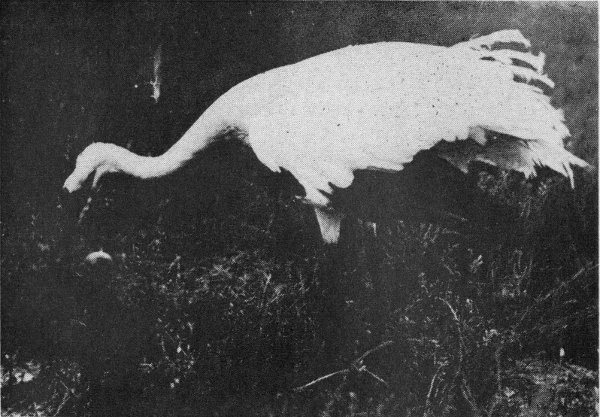
Whooping Crane—fast becoming extinct
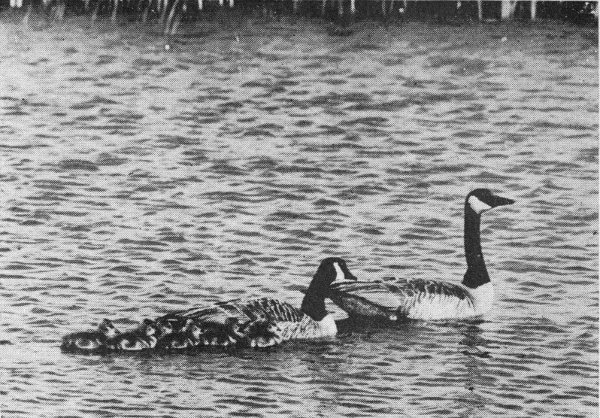
Waterfowl are plentiful off Padre

Bullfight
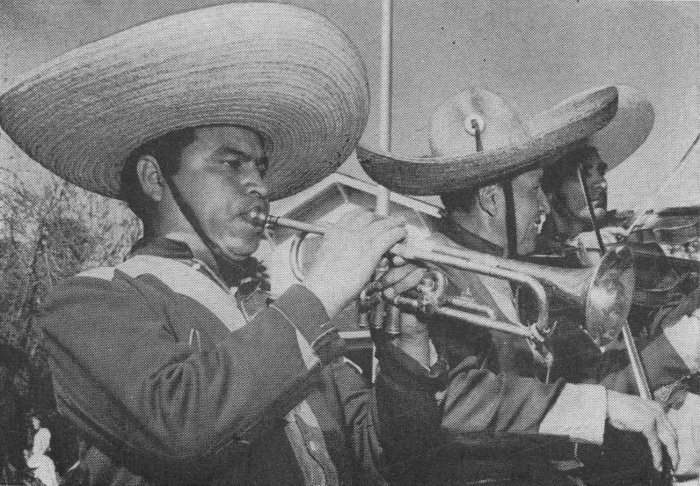
Charro Days mean music
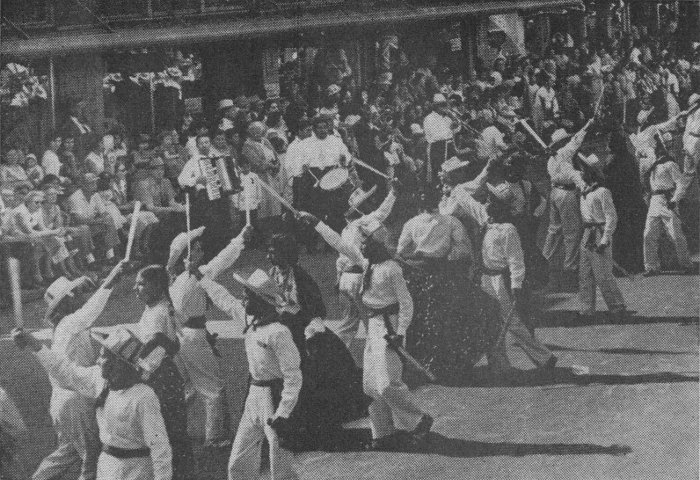
Charro Days street scene
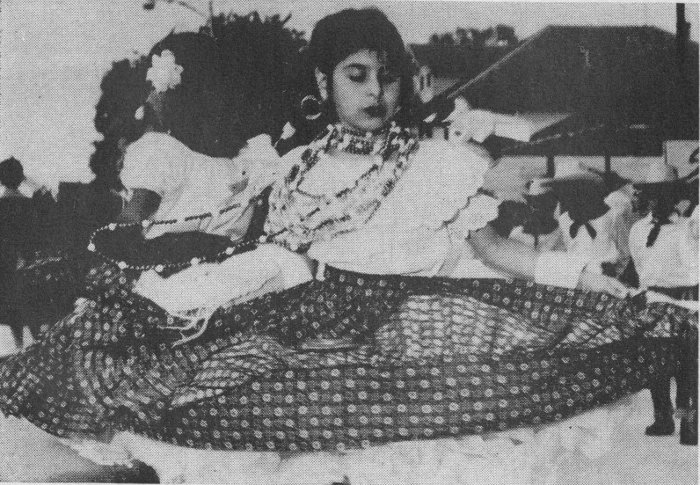
Everybody gets in on Charro Days

Corpus Christi skyline from the waterfront
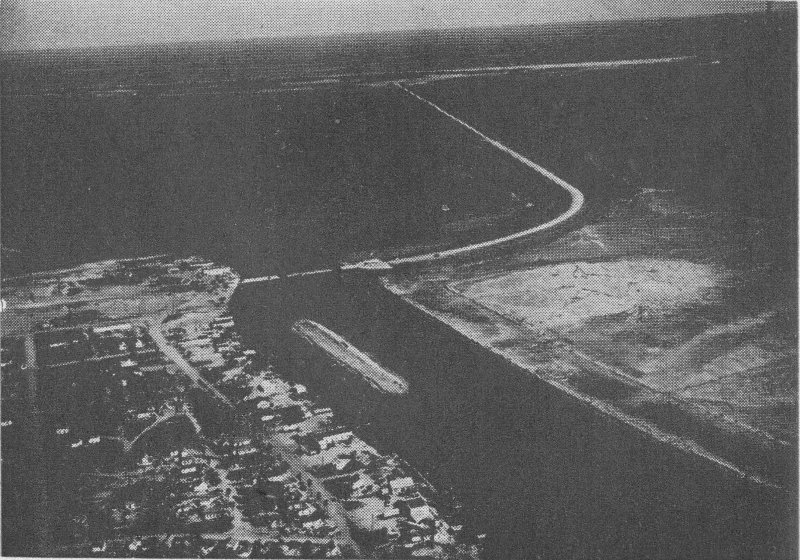
Queen Isabella Causeway
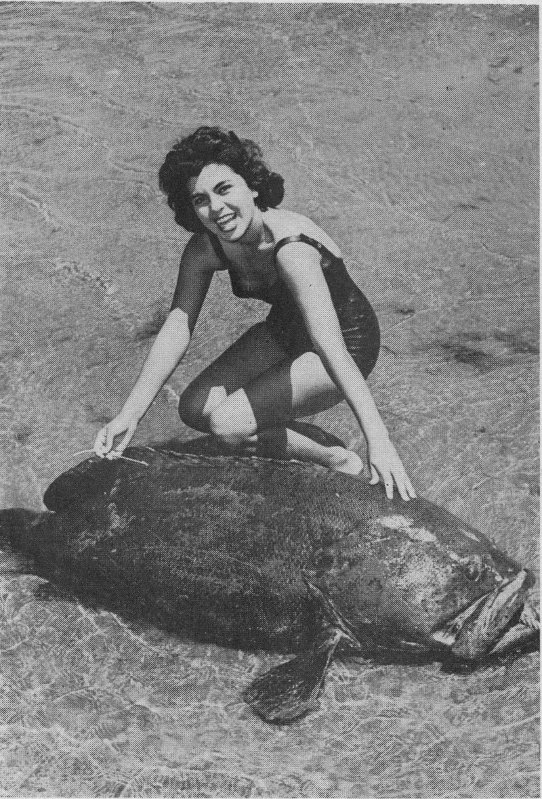
Padre Island waters have big fish, the beaches beauty

Hidalgo bridge to Reynosa (Struby Photo)
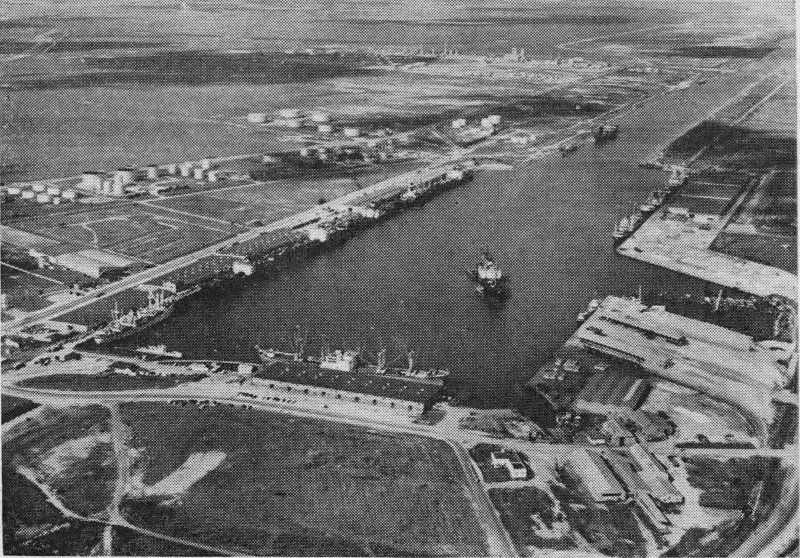
Ships at dock, Port Brownsville
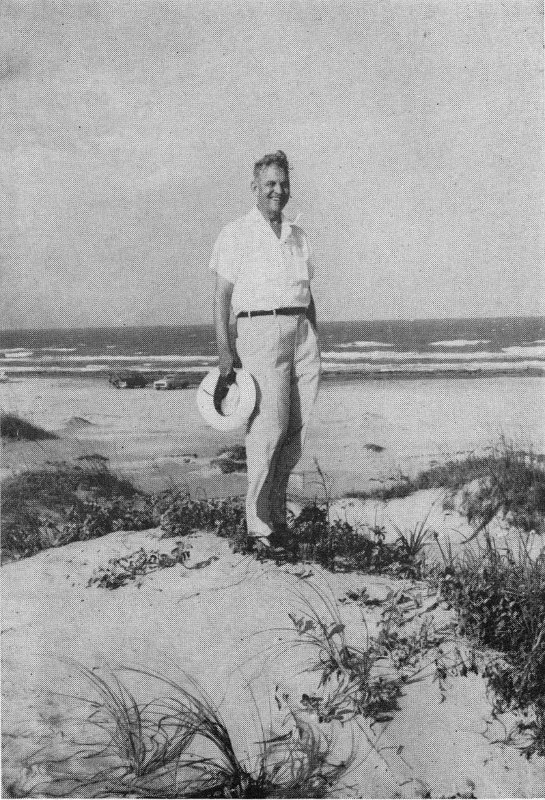
Mr. Padre Island himself: John L. Tompkins

Treasure during Buccaneer Days

On Padre Island, and in the surrounding Rio Grande Valley, are many and varied forms of recreation. Between Padre and the Texas coast lie the teeming waters of the famous Laguna Madre, where many varieties of fish await to challenge the fisherman. Whether he prefers fishing in the bay, from the jetties, surf fishing or deep sea fishing, this area provides many thrilling catches for the sportsman.
Boats may be chartered for personal use or an individual may join one of the party-boats that make daily runs. Twenty miles out of Port Isabel, for 46 instance, the red snapper catch is so well assured that many skippers don’t charge if their guests fail to return with some.
Laguna Madre is a natural spawning ground for many varieties of fish, such as trout, flounder, redfish, croaker, whiting, sheephead, snook, drum, ladyfish, and the jackcravelle, who loves to break rods, tear up reels and take lures away.
Already two hundred and seventy-two varieties of salt water fish have been pulled from the waters around Padre, and more than eight hundred varieties are believed to exist within convenient boating distance. Thirty-eight varieties of game fish alone are contained in the surrounding waters.
For the fisherman who prefers a lure, advice from Padre Island is, “Fish, like men, are attracted by an extra bit of finery; those little frills that transform the ordinary into a ravishing dish so delectable that they can’t be ignored. Flirt with the fish; doll up your hook. Sheath a common hook in the latest styles of feather, set it off with just the right touch of glittering metal, and often the fish just can’t resist it. A pork rind, one of the most widely used baits, can be added to a spoon with devastating effect. It improves the action of the wobbling spoon and will often produce strikes when nothing seems to do the trick.”
One of the most interesting natural features of 47 the Padre Island area is its proximity to the only truly deep area in the entire Gulf of Mexico, Sigsbee’s Deep. There can be little doubt that the nearness of this enormous body of deep blue water is a direct factor in creating the mild weather conditions and bountiful marine life in the area.
Skin diving is rapidly growing in popularity as a sport at Padre. Favorite targets for the spear fishermen off Padre Island are ling, jewfish, snapper, redfish, trout, flounder, mackerel and sheepshead. Divers bring to light some of the secrets of the Gulf floor—as well as tackle boxes and debris from wrecked ships.
Although fishing is year round, excellent hunting is seasonal. During the fall and winter, Laguna Madre and nearby inland waters are filled with migratory waterfowl. Yours for the bagging are redhead, pintail, canvasback, teal and blue-bill ducks, Canadian and white-front geese, mourning doves and whitewing doves, and bobwhites.
Deer and javelina, sometimes known as the peccary, are easily hunted on one and two day camping trips in the Rio Grande Valley.
For the simpler sports, hikers can enjoy a trip down the hard-packed sand beach of Padre or explore the thousands of sand dunes. Treasure hunting is also a funtime sport.
Camping out doesn’t necessitate any quantity of 48 stream-lined equipment. Most of the time one can sleep under the stars with no fear of rain or cold weather. The broad expanse of room provides plenty of activity for children, while adults may relax and enjoy the sea breezes.
Artists frequently dot the beach to catch the vivid colors on their canvasses, so inspiring is the natural beauty of sea and sand.
Romping in the Gulf is considered safe because of long reaches of shallow water. The towns of the Valley offer golfing, auto races, horseback riding, wrestling, bowling, roller skating and swimming in the modern resort hotel and motel pools. Each year a Walkathon is held on Padre Island, in which the contestants must restrict their gait to a walk in covering the distance of the length of the island. Organized treasure hunts, fishing and golf tournaments, add to the island’s fun facilities.
ISLA BLANCA PARK, on the southernmost section of the island, has ample room and facilities including beach cabañas, bathhouse and sundeck, many provisions for recreation, and a picturesque seaside restaurant. An elaborate FUNORAMA for the children features a train ride with streamlined diesel models.
Because of the good nature of the weather, most of the water sports are enjoyed the year round.

There seems to be little doubt that Padre Island will quickly take its place as one of the nation’s outstanding recreational spots. With only three semitropical beach areas in the United States, the southern parts of Florida, California, and Texas, Padre is the largest and last undeveloped warm water beach area left. On Valentine’s Day, 1954, the beautiful Queen Isabella Causeway opened at the southern tip of the island.
The climate is as good as Miami’s, and it is blessed with one of the finest white sand beaches in the world. 50 Laguna Madre is a natural water sports basin, and the deep sea fishing in the Gulf of Mexico is already world famous.
Padre Island’s principal developer, John L. Tompkins, whose grandfather marched down Padre with Taylor’s army during the Mexican War in 1846, is known locally as “Mr. Padre Island,” and has focused international attention on the area’s resort possibilities.
When Padre Island’s future as a National Seashore Park began to be considered in Congress, a popular song, called “Come with me to Padre Island,” was dedicated to the island. It was composed and recorded by your author, Loraine Daly of San Antonio, Texas, and Carl Johnson of Dallas, Texas. It served to introduce this little-known tropical island to many who were not acquainted with it.
Envisioned in the island’s near-term future are a marina, a king-sized aquarium—where the public can view marine life—and an oceanographic laboratory.
Brownsville, which neighbors the southern tip of Padre, has long been known as the gateway to Latin America. None of us can deny the significance of having one of our brightest resort areas right at the doorstep of the entrance to our country.
Ferguson, Harvey, Rio Grande, A. A. Knopf, New York, 1933.
Gilpin, Laura, The Rio Grande, Duell, Sloan and Pearce, New York, 1949.
Hockaday, J. A., Article in the Port Isabel Press, June 26, 1959.
Hogner, Dorothy Childs, South to Padre, Lothrop, Lee and Shepard, New York, 1936.
Horgan, Paul, Great River: The Rio Grande in North American History, Rinehart, New York, 1917.
Kelsey, Anna Marietta, Through the Years, The Naylor Company, San Antonio, 1952.
Lewis, Tracy Hammond, Along the Rio Grande, Lewis, New York, 1916.
Lott, Virgil N., People and Plots on the Rio Grande, The Naylor Company, San Antonio, 1957.
McKenna, Verna Jackson, Old Point Isabel Lighthouse, Harlingen, Texas, 1956.
Pierce, Frank Cushman, A Brief History of the Rio Grande Valley, George Banks, Menasha, Wisconsin, 1917.
Purcell, Anita, Ed., Frontier Mexico: 1875-1894 (The Letters of William L. Purcell), The Naylor Company, San Antonio, 1962.
Reese, Pauline, The History of Padre Island, Master’s Thesis, Texas College of Arts and Industries, Kingsville, Texas.
Stambaugh, J., The Lower Rio Grande Valley of Texas, The Naylor Company, San Antonio, 1954.
Writer’s Round Table—Padre Island, The Naylor Company, San Antonio, 1950.
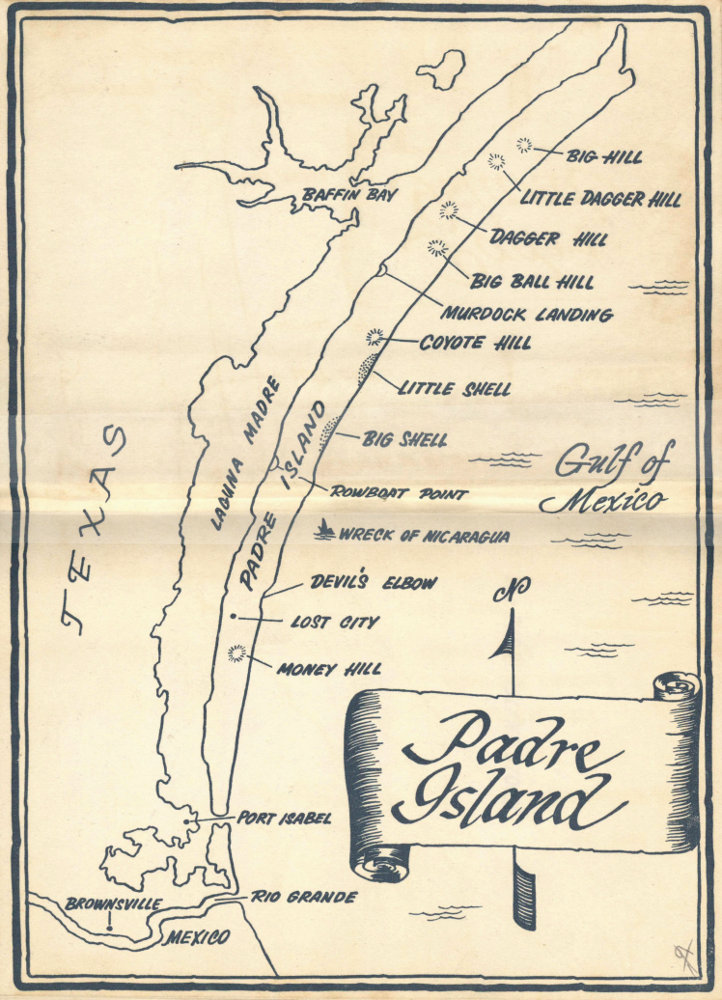
End of the Project Gutenberg EBook of The Padre Island Story, by
Loraine Daly and Pat Reumert
*** END OF THIS PROJECT GUTENBERG EBOOK THE PADRE ISLAND STORY ***
***** This file should be named 57118-h.htm or 57118-h.zip *****
This and all associated files of various formats will be found in:
http://www.gutenberg.org/5/7/1/1/57118/
Produced by Stephen Hutcheson and the Online Distributed
Proofreading Team at http://www.pgdp.net
Updated editions will replace the previous one--the old editions will
be renamed.
Creating the works from print editions not protected by U.S. copyright
law means that no one owns a United States copyright in these works,
so the Foundation (and you!) can copy and distribute it in the United
States without permission and without paying copyright
royalties. Special rules, set forth in the General Terms of Use part
of this license, apply to copying and distributing Project
Gutenberg-tm electronic works to protect the PROJECT GUTENBERG-tm
concept and trademark. Project Gutenberg is a registered trademark,
and may not be used if you charge for the eBooks, unless you receive
specific permission. If you do not charge anything for copies of this
eBook, complying with the rules is very easy. You may use this eBook
for nearly any purpose such as creation of derivative works, reports,
performances and research. They may be modified and printed and given
away--you may do practically ANYTHING in the United States with eBooks
not protected by U.S. copyright law. Redistribution is subject to the
trademark license, especially commercial redistribution.
START: FULL LICENSE
THE FULL PROJECT GUTENBERG LICENSE
PLEASE READ THIS BEFORE YOU DISTRIBUTE OR USE THIS WORK
To protect the Project Gutenberg-tm mission of promoting the free
distribution of electronic works, by using or distributing this work
(or any other work associated in any way with the phrase "Project
Gutenberg"), you agree to comply with all the terms of the Full
Project Gutenberg-tm License available with this file or online at
www.gutenberg.org/license.
Section 1. General Terms of Use and Redistributing Project
Gutenberg-tm electronic works
1.A. By reading or using any part of this Project Gutenberg-tm
electronic work, you indicate that you have read, understand, agree to
and accept all the terms of this license and intellectual property
(trademark/copyright) agreement. If you do not agree to abide by all
the terms of this agreement, you must cease using and return or
destroy all copies of Project Gutenberg-tm electronic works in your
possession. If you paid a fee for obtaining a copy of or access to a
Project Gutenberg-tm electronic work and you do not agree to be bound
by the terms of this agreement, you may obtain a refund from the
person or entity to whom you paid the fee as set forth in paragraph
1.E.8.
1.B. "Project Gutenberg" is a registered trademark. It may only be
used on or associated in any way with an electronic work by people who
agree to be bound by the terms of this agreement. There are a few
things that you can do with most Project Gutenberg-tm electronic works
even without complying with the full terms of this agreement. See
paragraph 1.C below. There are a lot of things you can do with Project
Gutenberg-tm electronic works if you follow the terms of this
agreement and help preserve free future access to Project Gutenberg-tm
electronic works. See paragraph 1.E below.
1.C. The Project Gutenberg Literary Archive Foundation ("the
Foundation" or PGLAF), owns a compilation copyright in the collection
of Project Gutenberg-tm electronic works. Nearly all the individual
works in the collection are in the public domain in the United
States. If an individual work is unprotected by copyright law in the
United States and you are located in the United States, we do not
claim a right to prevent you from copying, distributing, performing,
displaying or creating derivative works based on the work as long as
all references to Project Gutenberg are removed. Of course, we hope
that you will support the Project Gutenberg-tm mission of promoting
free access to electronic works by freely sharing Project Gutenberg-tm
works in compliance with the terms of this agreement for keeping the
Project Gutenberg-tm name associated with the work. You can easily
comply with the terms of this agreement by keeping this work in the
same format with its attached full Project Gutenberg-tm License when
you share it without charge with others.
1.D. The copyright laws of the place where you are located also govern
what you can do with this work. Copyright laws in most countries are
in a constant state of change. If you are outside the United States,
check the laws of your country in addition to the terms of this
agreement before downloading, copying, displaying, performing,
distributing or creating derivative works based on this work or any
other Project Gutenberg-tm work. The Foundation makes no
representations concerning the copyright status of any work in any
country outside the United States.
1.E. Unless you have removed all references to Project Gutenberg:
1.E.1. The following sentence, with active links to, or other
immediate access to, the full Project Gutenberg-tm License must appear
prominently whenever any copy of a Project Gutenberg-tm work (any work
on which the phrase "Project Gutenberg" appears, or with which the
phrase "Project Gutenberg" is associated) is accessed, displayed,
performed, viewed, copied or distributed:
This eBook is for the use of anyone anywhere in the United States and
most other parts of the world at no cost and with almost no
restrictions whatsoever. You may copy it, give it away or re-use it
under the terms of the Project Gutenberg License included with this
eBook or online at www.gutenberg.org. If you are not located in the
United States, you'll have to check the laws of the country where you
are located before using this ebook.
1.E.2. If an individual Project Gutenberg-tm electronic work is
derived from texts not protected by U.S. copyright law (does not
contain a notice indicating that it is posted with permission of the
copyright holder), the work can be copied and distributed to anyone in
the United States without paying any fees or charges. If you are
redistributing or providing access to a work with the phrase "Project
Gutenberg" associated with or appearing on the work, you must comply
either with the requirements of paragraphs 1.E.1 through 1.E.7 or
obtain permission for the use of the work and the Project Gutenberg-tm
trademark as set forth in paragraphs 1.E.8 or 1.E.9.
1.E.3. If an individual Project Gutenberg-tm electronic work is posted
with the permission of the copyright holder, your use and distribution
must comply with both paragraphs 1.E.1 through 1.E.7 and any
additional terms imposed by the copyright holder. Additional terms
will be linked to the Project Gutenberg-tm License for all works
posted with the permission of the copyright holder found at the
beginning of this work.
1.E.4. Do not unlink or detach or remove the full Project Gutenberg-tm
License terms from this work, or any files containing a part of this
work or any other work associated with Project Gutenberg-tm.
1.E.5. Do not copy, display, perform, distribute or redistribute this
electronic work, or any part of this electronic work, without
prominently displaying the sentence set forth in paragraph 1.E.1 with
active links or immediate access to the full terms of the Project
Gutenberg-tm License.
1.E.6. You may convert to and distribute this work in any binary,
compressed, marked up, nonproprietary or proprietary form, including
any word processing or hypertext form. However, if you provide access
to or distribute copies of a Project Gutenberg-tm work in a format
other than "Plain Vanilla ASCII" or other format used in the official
version posted on the official Project Gutenberg-tm web site
(www.gutenberg.org), you must, at no additional cost, fee or expense
to the user, provide a copy, a means of exporting a copy, or a means
of obtaining a copy upon request, of the work in its original "Plain
Vanilla ASCII" or other form. Any alternate format must include the
full Project Gutenberg-tm License as specified in paragraph 1.E.1.
1.E.7. Do not charge a fee for access to, viewing, displaying,
performing, copying or distributing any Project Gutenberg-tm works
unless you comply with paragraph 1.E.8 or 1.E.9.
1.E.8. You may charge a reasonable fee for copies of or providing
access to or distributing Project Gutenberg-tm electronic works
provided that
* You pay a royalty fee of 20% of the gross profits you derive from
the use of Project Gutenberg-tm works calculated using the method
you already use to calculate your applicable taxes. The fee is owed
to the owner of the Project Gutenberg-tm trademark, but he has
agreed to donate royalties under this paragraph to the Project
Gutenberg Literary Archive Foundation. Royalty payments must be paid
within 60 days following each date on which you prepare (or are
legally required to prepare) your periodic tax returns. Royalty
payments should be clearly marked as such and sent to the Project
Gutenberg Literary Archive Foundation at the address specified in
Section 4, "Information about donations to the Project Gutenberg
Literary Archive Foundation."
* You provide a full refund of any money paid by a user who notifies
you in writing (or by e-mail) within 30 days of receipt that s/he
does not agree to the terms of the full Project Gutenberg-tm
License. You must require such a user to return or destroy all
copies of the works possessed in a physical medium and discontinue
all use of and all access to other copies of Project Gutenberg-tm
works.
* You provide, in accordance with paragraph 1.F.3, a full refund of
any money paid for a work or a replacement copy, if a defect in the
electronic work is discovered and reported to you within 90 days of
receipt of the work.
* You comply with all other terms of this agreement for free
distribution of Project Gutenberg-tm works.
1.E.9. If you wish to charge a fee or distribute a Project
Gutenberg-tm electronic work or group of works on different terms than
are set forth in this agreement, you must obtain permission in writing
from both the Project Gutenberg Literary Archive Foundation and The
Project Gutenberg Trademark LLC, the owner of the Project Gutenberg-tm
trademark. Contact the Foundation as set forth in Section 3 below.
1.F.
1.F.1. Project Gutenberg volunteers and employees expend considerable
effort to identify, do copyright research on, transcribe and proofread
works not protected by U.S. copyright law in creating the Project
Gutenberg-tm collection. Despite these efforts, Project Gutenberg-tm
electronic works, and the medium on which they may be stored, may
contain "Defects," such as, but not limited to, incomplete, inaccurate
or corrupt data, transcription errors, a copyright or other
intellectual property infringement, a defective or damaged disk or
other medium, a computer virus, or computer codes that damage or
cannot be read by your equipment.
1.F.2. LIMITED WARRANTY, DISCLAIMER OF DAMAGES - Except for the "Right
of Replacement or Refund" described in paragraph 1.F.3, the Project
Gutenberg Literary Archive Foundation, the owner of the Project
Gutenberg-tm trademark, and any other party distributing a Project
Gutenberg-tm electronic work under this agreement, disclaim all
liability to you for damages, costs and expenses, including legal
fees. YOU AGREE THAT YOU HAVE NO REMEDIES FOR NEGLIGENCE, STRICT
LIABILITY, BREACH OF WARRANTY OR BREACH OF CONTRACT EXCEPT THOSE
PROVIDED IN PARAGRAPH 1.F.3. YOU AGREE THAT THE FOUNDATION, THE
TRADEMARK OWNER, AND ANY DISTRIBUTOR UNDER THIS AGREEMENT WILL NOT BE
LIABLE TO YOU FOR ACTUAL, DIRECT, INDIRECT, CONSEQUENTIAL, PUNITIVE OR
INCIDENTAL DAMAGES EVEN IF YOU GIVE NOTICE OF THE POSSIBILITY OF SUCH
DAMAGE.
1.F.3. LIMITED RIGHT OF REPLACEMENT OR REFUND - If you discover a
defect in this electronic work within 90 days of receiving it, you can
receive a refund of the money (if any) you paid for it by sending a
written explanation to the person you received the work from. If you
received the work on a physical medium, you must return the medium
with your written explanation. The person or entity that provided you
with the defective work may elect to provide a replacement copy in
lieu of a refund. If you received the work electronically, the person
or entity providing it to you may choose to give you a second
opportunity to receive the work electronically in lieu of a refund. If
the second copy is also defective, you may demand a refund in writing
without further opportunities to fix the problem.
1.F.4. Except for the limited right of replacement or refund set forth
in paragraph 1.F.3, this work is provided to you 'AS-IS', WITH NO
OTHER WARRANTIES OF ANY KIND, EXPRESS OR IMPLIED, INCLUDING BUT NOT
LIMITED TO WARRANTIES OF MERCHANTABILITY OR FITNESS FOR ANY PURPOSE.
1.F.5. Some states do not allow disclaimers of certain implied
warranties or the exclusion or limitation of certain types of
damages. If any disclaimer or limitation set forth in this agreement
violates the law of the state applicable to this agreement, the
agreement shall be interpreted to make the maximum disclaimer or
limitation permitted by the applicable state law. The invalidity or
unenforceability of any provision of this agreement shall not void the
remaining provisions.
1.F.6. INDEMNITY - You agree to indemnify and hold the Foundation, the
trademark owner, any agent or employee of the Foundation, anyone
providing copies of Project Gutenberg-tm electronic works in
accordance with this agreement, and any volunteers associated with the
production, promotion and distribution of Project Gutenberg-tm
electronic works, harmless from all liability, costs and expenses,
including legal fees, that arise directly or indirectly from any of
the following which you do or cause to occur: (a) distribution of this
or any Project Gutenberg-tm work, (b) alteration, modification, or
additions or deletions to any Project Gutenberg-tm work, and (c) any
Defect you cause.
Section 2. Information about the Mission of Project Gutenberg-tm
Project Gutenberg-tm is synonymous with the free distribution of
electronic works in formats readable by the widest variety of
computers including obsolete, old, middle-aged and new computers. It
exists because of the efforts of hundreds of volunteers and donations
from people in all walks of life.
Volunteers and financial support to provide volunteers with the
assistance they need are critical to reaching Project Gutenberg-tm's
goals and ensuring that the Project Gutenberg-tm collection will
remain freely available for generations to come. In 2001, the Project
Gutenberg Literary Archive Foundation was created to provide a secure
and permanent future for Project Gutenberg-tm and future
generations. To learn more about the Project Gutenberg Literary
Archive Foundation and how your efforts and donations can help, see
Sections 3 and 4 and the Foundation information page at
www.gutenberg.org
Section 3. Information about the Project Gutenberg Literary Archive Foundation
The Project Gutenberg Literary Archive Foundation is a non profit
501(c)(3) educational corporation organized under the laws of the
state of Mississippi and granted tax exempt status by the Internal
Revenue Service. The Foundation's EIN or federal tax identification
number is 64-6221541. Contributions to the Project Gutenberg Literary
Archive Foundation are tax deductible to the full extent permitted by
U.S. federal laws and your state's laws.
The Foundation's principal office is in Fairbanks, Alaska, with the
mailing address: PO Box 750175, Fairbanks, AK 99775, but its
volunteers and employees are scattered throughout numerous
locations. Its business office is located at 809 North 1500 West, Salt
Lake City, UT 84116, (801) 596-1887. Email contact links and up to
date contact information can be found at the Foundation's web site and
official page at www.gutenberg.org/contact
For additional contact information:
Dr. Gregory B. Newby
Chief Executive and Director
gbnewby@pglaf.org
Section 4. Information about Donations to the Project Gutenberg
Literary Archive Foundation
Project Gutenberg-tm depends upon and cannot survive without wide
spread public support and donations to carry out its mission of
increasing the number of public domain and licensed works that can be
freely distributed in machine readable form accessible by the widest
array of equipment including outdated equipment. Many small donations
($1 to $5,000) are particularly important to maintaining tax exempt
status with the IRS.
The Foundation is committed to complying with the laws regulating
charities and charitable donations in all 50 states of the United
States. Compliance requirements are not uniform and it takes a
considerable effort, much paperwork and many fees to meet and keep up
with these requirements. We do not solicit donations in locations
where we have not received written confirmation of compliance. To SEND
DONATIONS or determine the status of compliance for any particular
state visit www.gutenberg.org/donate
While we cannot and do not solicit contributions from states where we
have not met the solicitation requirements, we know of no prohibition
against accepting unsolicited donations from donors in such states who
approach us with offers to donate.
International donations are gratefully accepted, but we cannot make
any statements concerning tax treatment of donations received from
outside the United States. U.S. laws alone swamp our small staff.
Please check the Project Gutenberg Web pages for current donation
methods and addresses. Donations are accepted in a number of other
ways including checks, online payments and credit card donations. To
donate, please visit: www.gutenberg.org/donate
Section 5. General Information About Project Gutenberg-tm electronic works.
Professor Michael S. Hart was the originator of the Project
Gutenberg-tm concept of a library of electronic works that could be
freely shared with anyone. For forty years, he produced and
distributed Project Gutenberg-tm eBooks with only a loose network of
volunteer support.
Project Gutenberg-tm eBooks are often created from several printed
editions, all of which are confirmed as not protected by copyright in
the U.S. unless a copyright notice is included. Thus, we do not
necessarily keep eBooks in compliance with any particular paper
edition.
Most people start at our Web site which has the main PG search
facility: www.gutenberg.org
This Web site includes information about Project Gutenberg-tm,
including how to make donations to the Project Gutenberg Literary
Archive Foundation, how to help produce our new eBooks, and how to
subscribe to our email newsletter to hear about new eBooks.